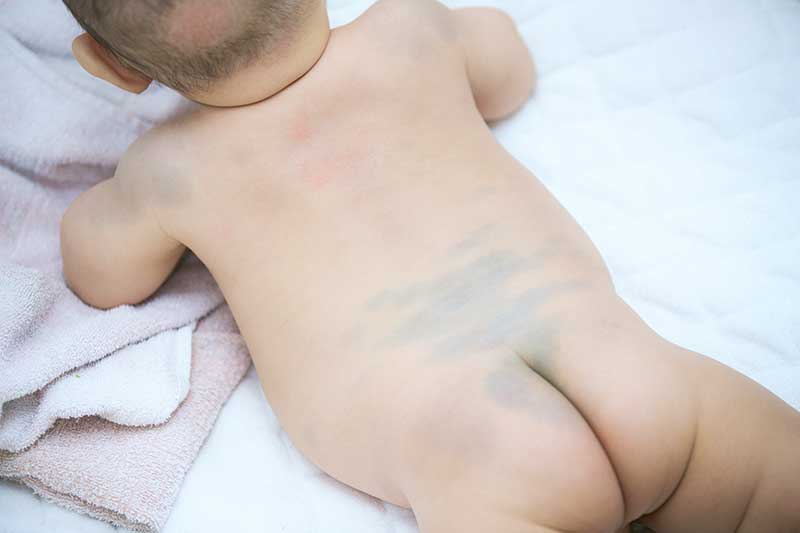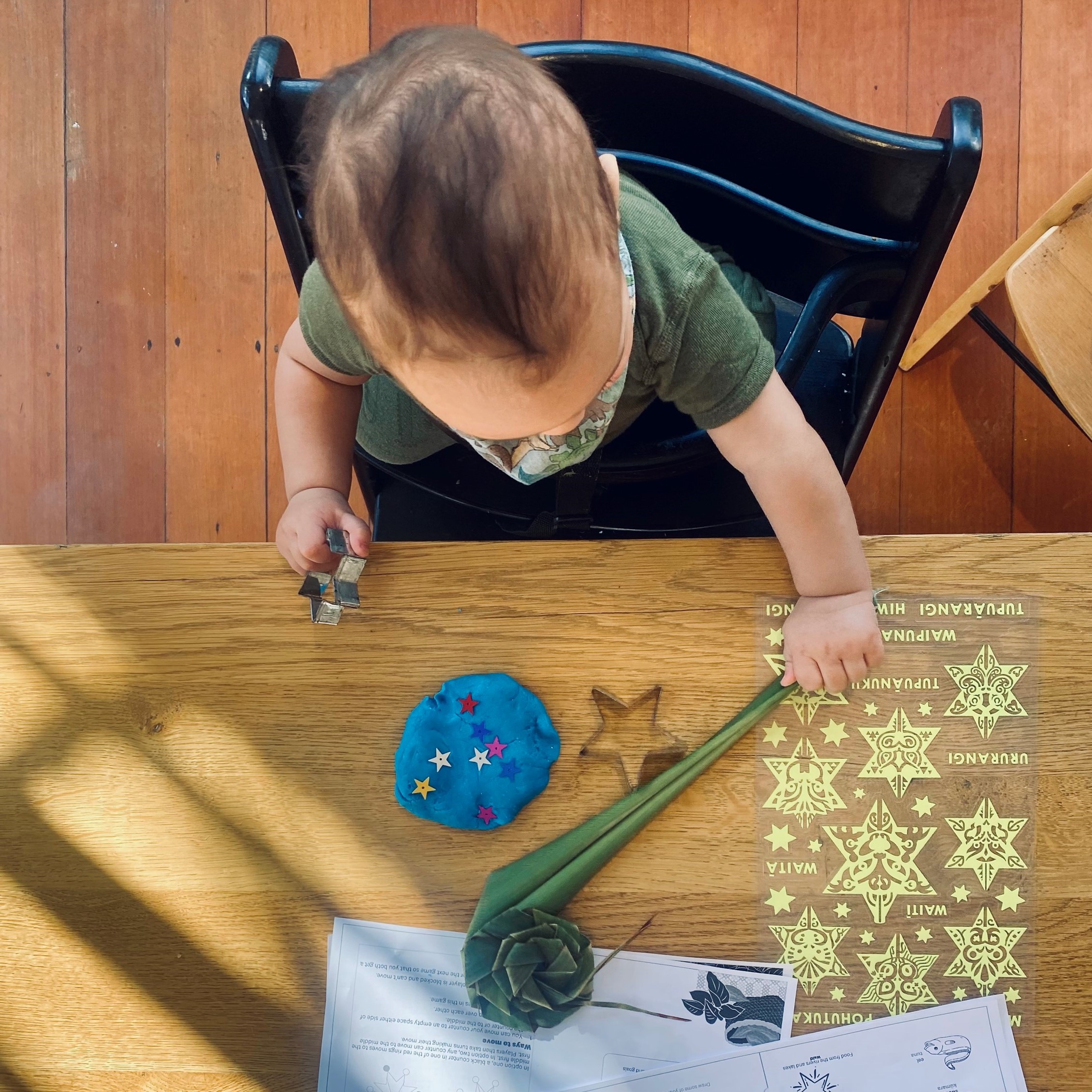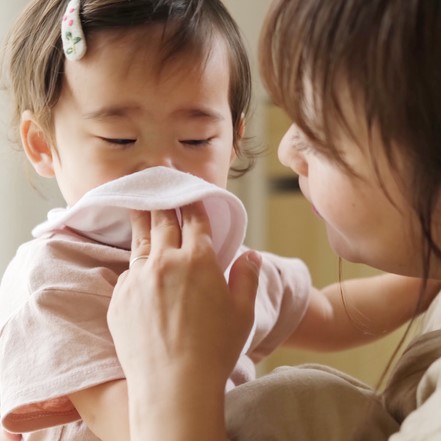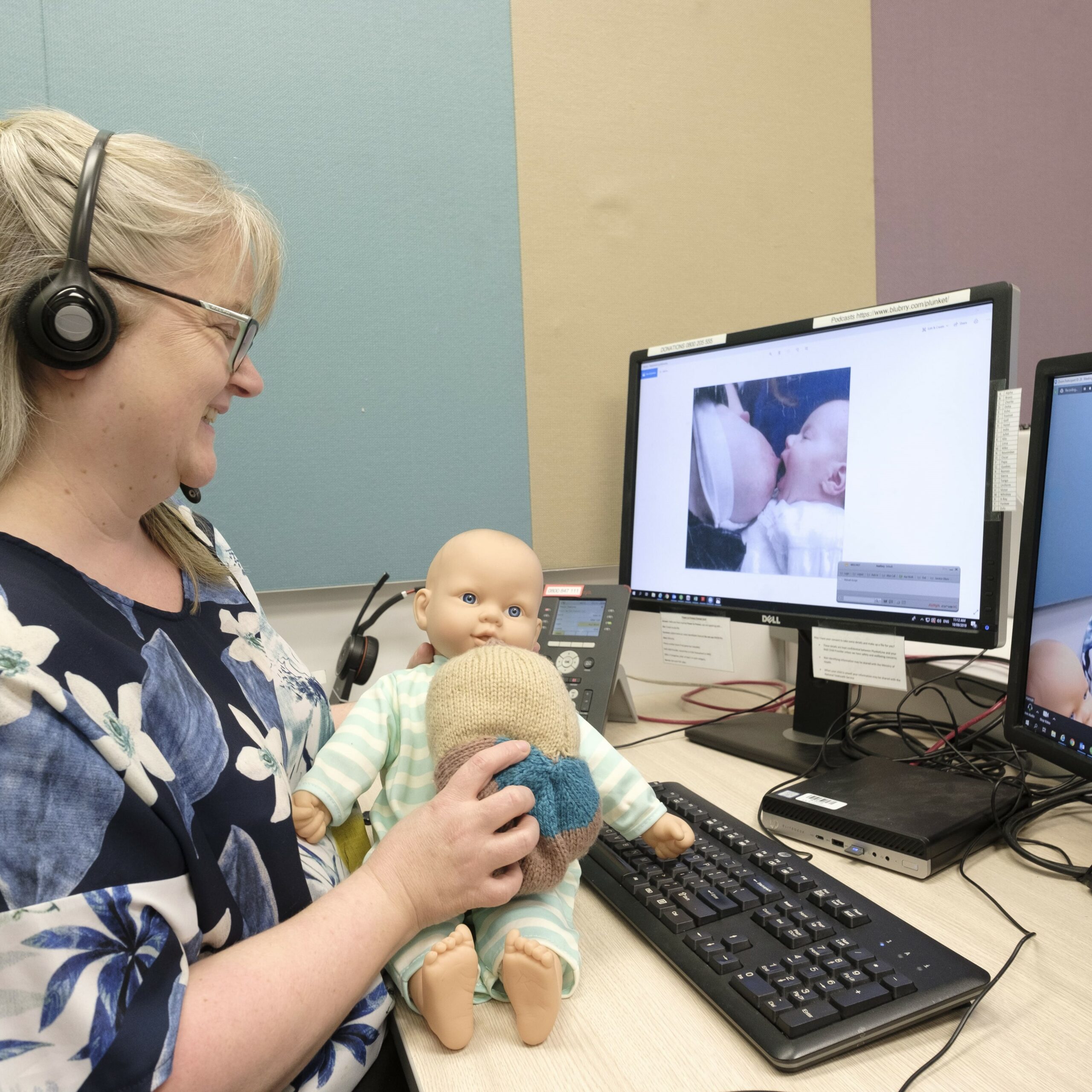All About Birthmarks in Babies

ABOVE Baby with a Mongolian spot
Your little one may be born with one or more birthmarks. Many babies have them but some are more common than others.
Here are ones that you might see on your pēpi or someone else’s baby:
- Dark red or pink patches (called stork bites) are usually visible on the eyelids, on the forehead in between the eyebrows, or on the nape of the neck. You may notice it become more visible in the coming weeks, especially when your baby cries or is hot. Stork bites usually disappear within one year.
- The blueish-grey patches that are present on babies at birth or appear within the first week are called Mongolian spots. They are not bruises but a common type of birthmark that is caused by pigment in the skin. They’re more common in infants with darker skin and usually appear on the lower back or buttocks but may appear on the face or limbs as well. Mongolian spots typically fade within a few months or the first year.
- A strawberry naevus or haemangioma is a benign (non-cancerous) reddish lump that is often small at birth and grows for 3-5 months. Occasionally, they may continue to grow for up to 18 months. In time it will regress in size and it usually disappears on its own within a few years. A haemangioma often doesn’t require treatment unless it is interfering with the child’s normal function, such as impairing vision, breathing or feeding.
- The flat purple or dark red patch which is present at birth is called a port-wine stain. It isn’t very common, occurring in around 0.3% of newborns. It is a permanent birthmark which may become bumpier in time. Port-wine stain birthmarks typically remain unchanged or deepen in colour but most can be treated with laser treatment when your child is older.



